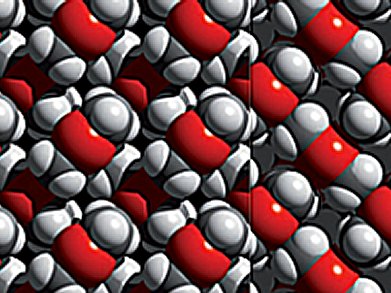Even though the classic organometallic compounds dimethylzinc and diethylzinc were discovered over 160 years ago, their solid-state structures have only recently been elucidated by researchers at the University of Liverpool, UK.
By using X-ray crystal structures of each organozinc compound and carry out a theoretical study, Alexander Steiner and his team show that the linear molecules, which are liquids at room temperature, form weak intermolecular interactions with small covalent contributions (see pictures). The overall results emphasize the remarkable complexity of these organometallic compounds.
Needless to say, this type of breakthrough is of interest to synthetic chemists as well as those working in the fields of photonic or nanomaterials.

- The Solid-State Structures of Dimethylzinc and Diethylzinc,
John Bacsa, Felix Hanke, Sarah Hindley, Rajesh Odedra, George R. Darling, Anthony C. Jones, Alexander Steiner
Angew. Chem. 2011.
DOI: 10.1002/ange.201105099 - The Solid-State Structures of Dimethylzinc and Diethylzinc,
John Bacsa, Felix Hanke, Sarah Hindley, Rajesh Odedra, George R. Darling, Anthony C. Jones, Alexander Steiner
Angew. Chem. Int. Ed. 2011.
DOI: 10.1002/anie.201105099




